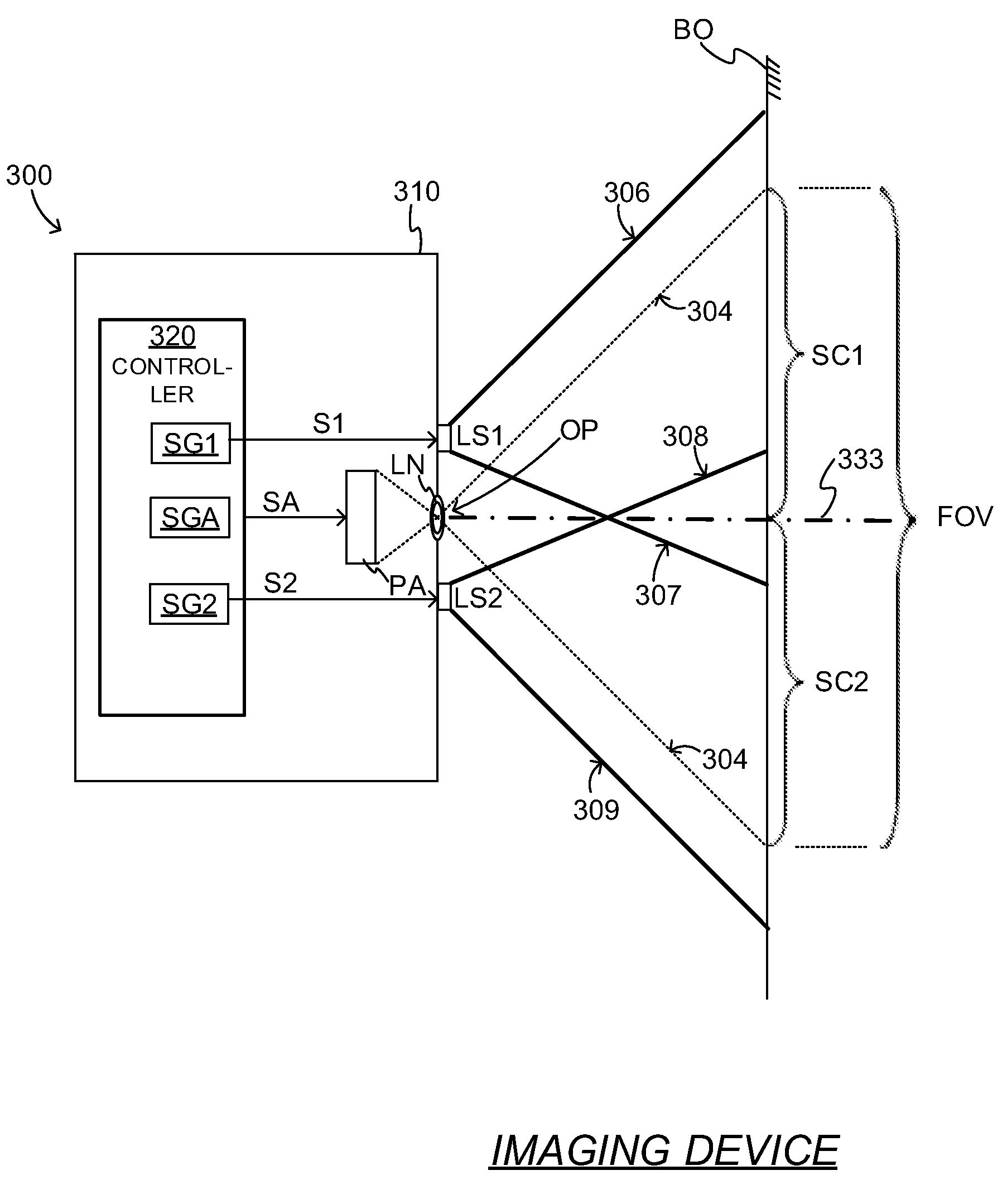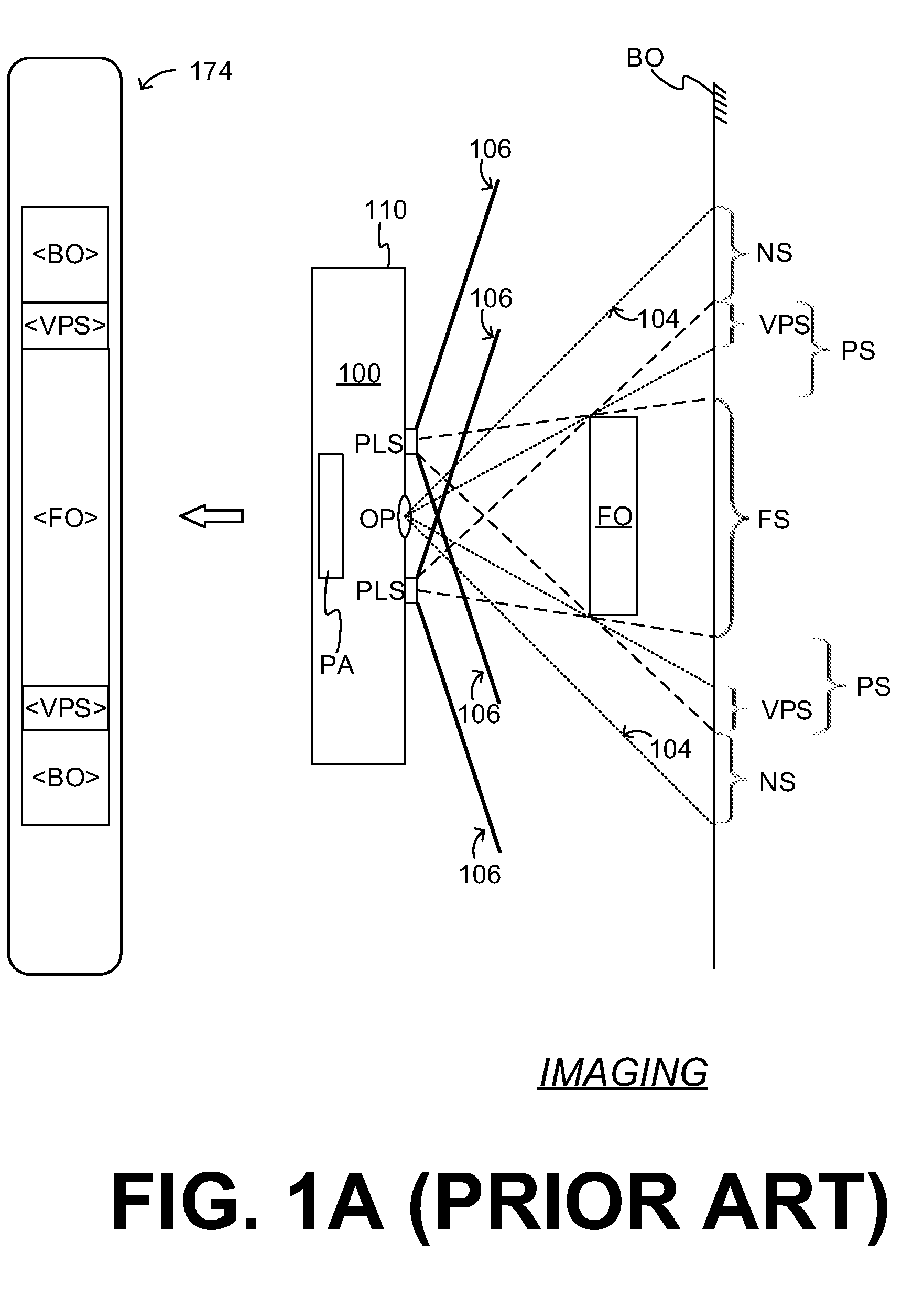Imaging devices with light sources for reduced shadow, controllers and methods
a technology of controllers and light sources, applied in the direction of cameras, television systems, instruments, etc., can solve the problems of degrading image, wasting light source power at the start and end of each batch, and degrading range-finding, so as to reduce range-finding errors, improve image, and less error
- Summary
- Abstract
- Description
- Claims
- Application Information
AI Technical Summary
Benefits of technology
Problems solved by technology
Method used
Image
Examples
Embodiment Construction
[0043]As has been mentioned, the present description is about imaging devices, systems, controllers and methods. Embodiments are now described in more detail.
[0044]FIG. 3 is a block diagram of an imaging device 100 made according to embodiments. Imaging device 300 has a casing 310, and includes an opening OP in casing 310. An optional lens LN is provided at opening OP, although that is not necessary.
[0045]Device 300 also has a pixel array PA for receiving light through opening OP. Pixel array PA has rows and columns of pixels. Device 300 additionally includes a controller 320, for controlling the operation of pixel array PA and other components. Controller 320 is described in more detail later in this document. Imaging device 300 has a defined field of view (“FOV”) 304, which starts with opening OP and is bounded by rays also designated 304. Of course, the FOV is in three dimensions, while rays 304 are in the plane of the two-dimensional diagram.
[0046]Imaging device 300 also include...
PUM
 Login to View More
Login to View More Abstract
Description
Claims
Application Information
 Login to View More
Login to View More - R&D
- Intellectual Property
- Life Sciences
- Materials
- Tech Scout
- Unparalleled Data Quality
- Higher Quality Content
- 60% Fewer Hallucinations
Browse by: Latest US Patents, China's latest patents, Technical Efficacy Thesaurus, Application Domain, Technology Topic, Popular Technical Reports.
© 2025 PatSnap. All rights reserved.Legal|Privacy policy|Modern Slavery Act Transparency Statement|Sitemap|About US| Contact US: help@patsnap.com



